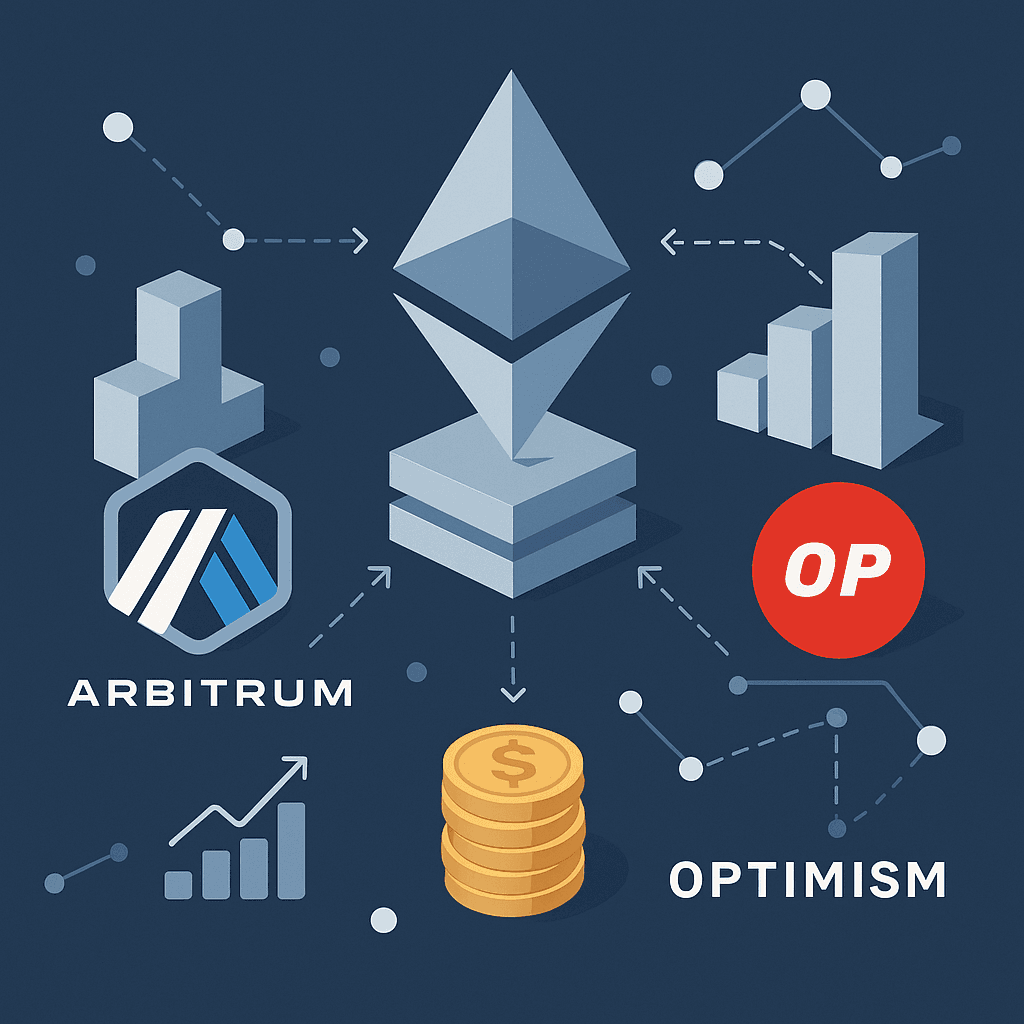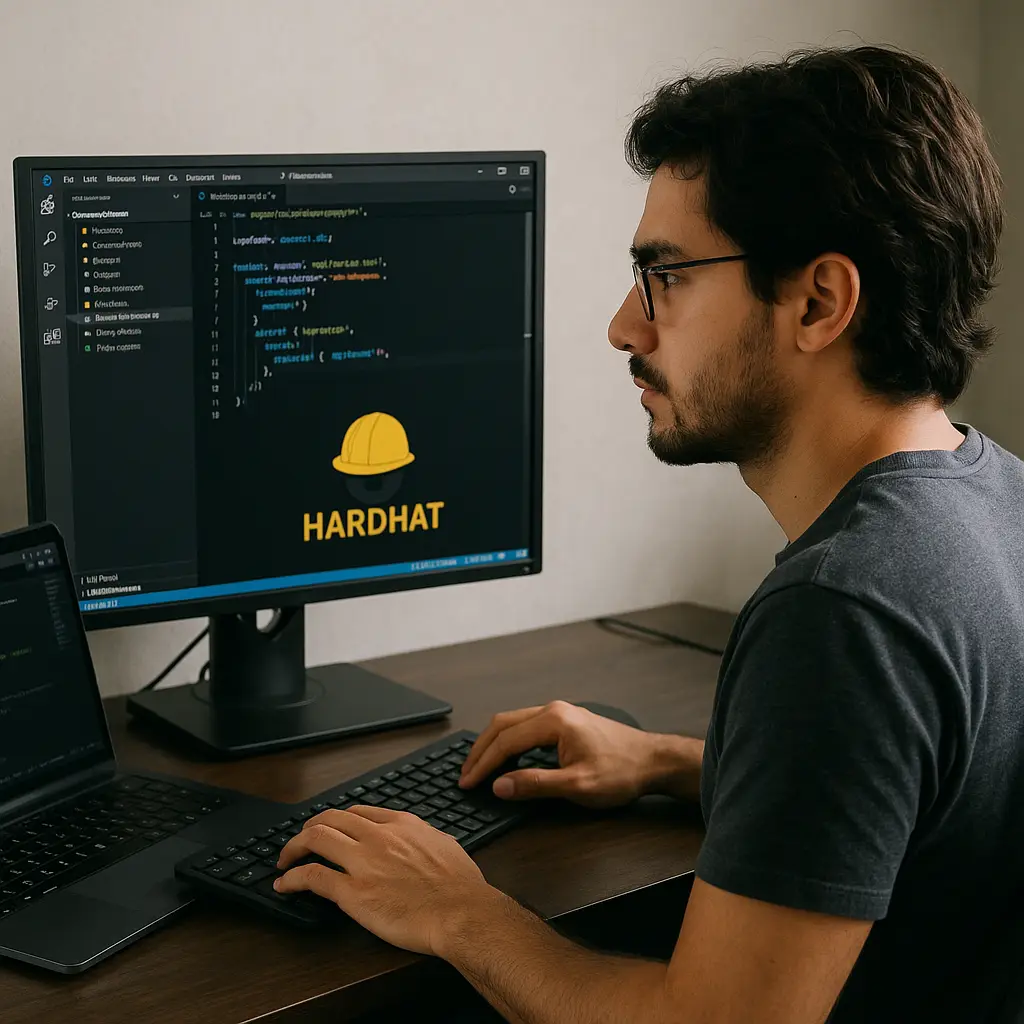Ethereum is the foundation of the decentralized web, powering everything from NFTs to DeFi apps. But as more people use it, one problem keeps coming up—it’s slow and expensive.
If you’ve ever tried to send a token or mint an NFT and paid several dollars in gas fees, you know the struggle. The good news is that new technologies are fixing this. Enter Arbitrum and Optimism—two “Layer 2” solutions that make Ethereum faster, cheaper, and more scalable without compromising on security.
What Are Layer 2 Solutions?
Think of Ethereum as a busy city center where every transaction has to pass through the same road. Layer 2 networks are like express lanes built above the main road. They handle most of the traffic separately, then report back to Ethereum for record-keeping and security.
These networks use a technology called optimistic rollups, which “roll up” many transactions into one batch. Instead of checking every transaction individually on Ethereum, they assume everything is valid (hence “optimistic”)—unless someone spots a mistake and challenges it.
This approach allows Arbitrum and Optimism to:
- Process hundreds of transactions per second (vs. Ethereum’s 15–30)
- Reduce fees by up to 90%
- Maintain Ethereum-level security
For users, that means cheaper transactions. For developers, it means finally being able to build apps that work at scale.
Arbitrum and Optimism Explained Simply
Both Arbitrum and Optimism are built to help Ethereum scale—but they do it in slightly different ways.
| Feature | Arbitrum | Optimism |
|---|---|---|
| Technology | Multi-round fraud proofs | Single-round fraud proofs |
| Withdrawal Time | ~7 days | ~7 days |
| EVM Compatibility | Near perfect (via Arbitrum Nitro) | Very high (slight differences in older versions) |
| Ecosystem Highlights | GMX, Radiant Capital, TreasureDAO | Synthetix, Velodrome, Base (by Coinbase) |
| Open Source Framework | Arbitrum Orbit | OP Stack (for custom L2 chains) |
In simple terms:
- Arbitrum focuses on performance and flexibility.
- Optimism focuses on community-driven scaling and open collaboration.
Both are EVM-compatible, meaning Ethereum apps can run on them with little or no code change.
What It’s Like for Developers (in Plain English)
Developers building on Arbitrum or Optimism use the same tools they already know from Ethereum—like Hardhat, Remix, or Truffle.
They simply connect to a different network (like Arbitrum One or OP Mainnet) and deploy their apps there. It’s just like choosing between different servers on a video game—same rules, faster gameplay.
To test apps safely, developers use “testnets” (free practice environments) where they can request test ETH and experiment before going live.
For users, this means apps on these platforms launch faster, feel smoother, and cost far less to use.
Common Challenges (and How Developers Solve Them)
Even with all the benefits, Layer 2s come with a few quirks:
- Withdrawals take time: Moving funds back to Ethereum takes about 7 days due to the fraud-checking process. Many apps now offer instant withdrawal options for a small fee.
- Timing isn’t exact: Blocks can appear at slightly different intervals, so time-sensitive apps use oracles (trusted time sources) instead of relying on block times.
- Security is still essential: Although Arbitrum and Optimism inherit Ethereum’s security, each app must still be carefully audited for vulnerabilities.
Why This Matters for Everyday Users
You don’t have to be a developer to benefit from these upgrades. If you use Ethereum apps, chances are many of them are quietly moving to Layer 2 networks.
You’ll notice:
- Lower transaction costs (often a few cents)
- Faster confirmation times (seconds instead of minutes)
- A smoother experience overall
In short: Layer 2 is making blockchain apps feel as quick and affordable as traditional web apps.
The Future Is Multi-Layered
Arbitrum and Optimism are helping Ethereum evolve from a congested network into a scalable ecosystem ready for millions of users.
From NFT marketplaces and DeFi platforms to blockchain games and social apps, Layer 2s are paving the way for Web3 to reach the mainstream.
For developers, it’s an exciting new playground.
For users, it’s the promise of a faster, cheaper, and fairer internet.
The next generation of Ethereum isn’t coming—it’s already here, powered by Arbitrum and Optimism.




